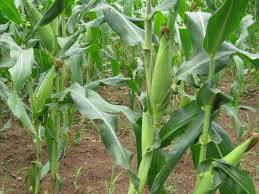 Over 50,000 maize farmers in Mt Kenya area have doubled their income by selling their maize collectively to processing heavyweights like Unga and Afya Millers, a break from tradition where they were struggling with volatile market prices.
Over 50,000 maize farmers in Mt Kenya area have doubled their income by selling their maize collectively to processing heavyweights like Unga and Afya Millers, a break from tradition where they were struggling with volatile market prices.
Under an ambitious Commercial villages concept that clusters farmers together and give them the bargaining power to dictate market prices, the farmers have now moved to increase acreage under maize cultivation investing in modern technologies to increase yields.
According to Mate Muriithi, the coordinator from Farm Concern, the farmers are now clustered into groups of around 500 called commercial villages (CV). The CV’s give the farmers more bargaining power in selling the maize, and allow small scale farmers to access the market by having their maize “bulked together with produce from other farmers” in communal stores.
The maize farmers are now earning from Sh1100 to Sh2500 per 90kg bag, where they were selling at farm gate prices of around Sh700, although “prices vary depending on market demand,” said Muriithi.
Farm Concern started the initiative in September last year, and is combining it with training farmers on the post-harvest management of grains. The three regions have suffered large grain losses through aflatoxin poisoning caused by premature harvesting and poor handling of maize grains after harvest including storing them in moist conditions.
Farm Concern’s field officers in the regions are also training the farmers on fumigation measures to control pests and using moisture monitors to ensure farmers store their maize with moisture content of below 13.5 per cent.
These techniques are enabling the farmers to store grains for longer and enabling them to wait for market prices to peak.
In addition to maize millers and farmers, other stakeholders involved in the initiative are pesticide providers and transport companies, who ferry the maize to collection centres.
Farm Concern chose the three regions because the farmers in these areas faced more marketing challenges than farmers in other areas, such as Eldoret, said Muriithi. In addition, in the major maize growing areas of the Rift Valley, incidences of Aflatoxin poisoning -which is a killer for people who consume the poisoned maize - have been rare.